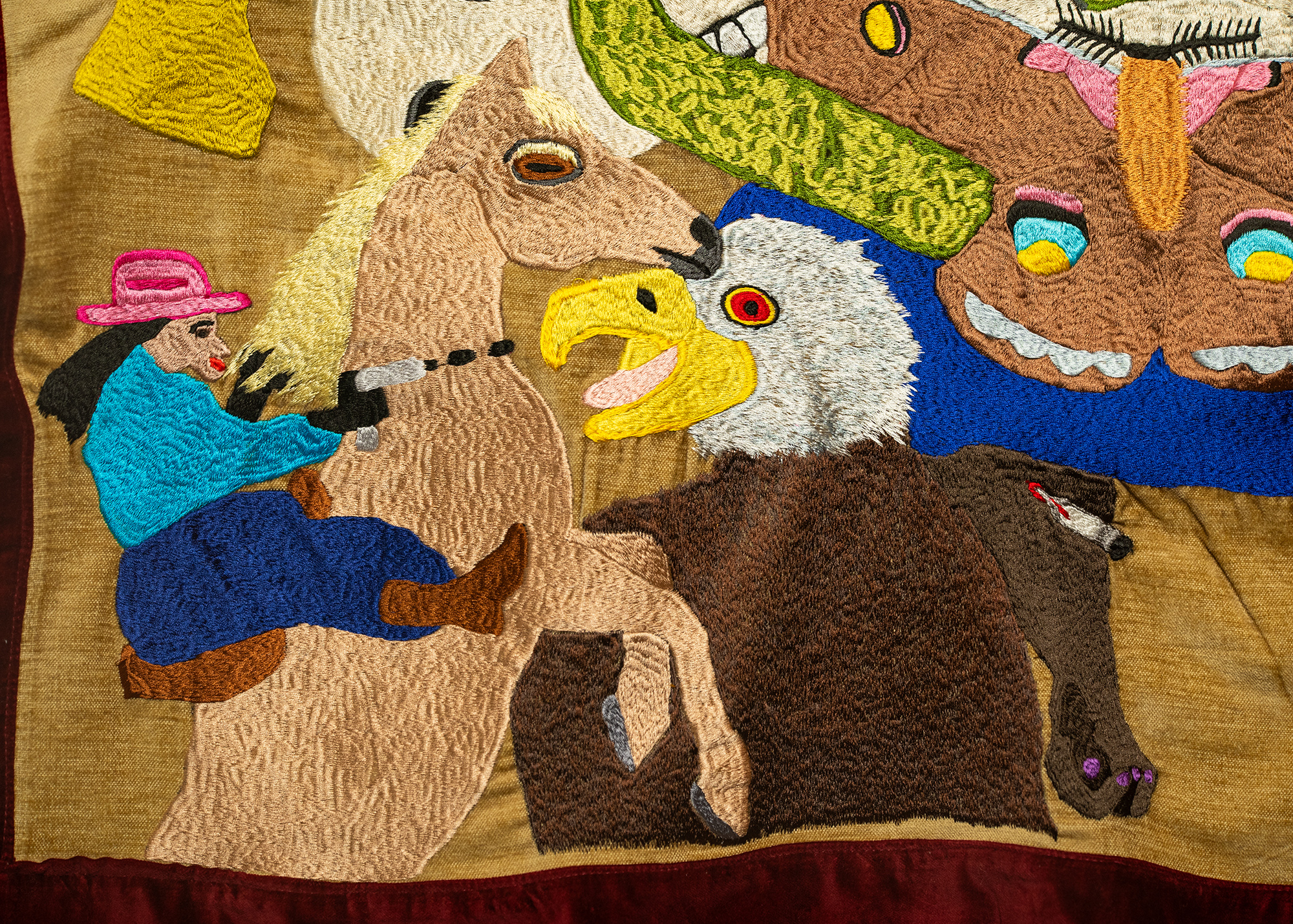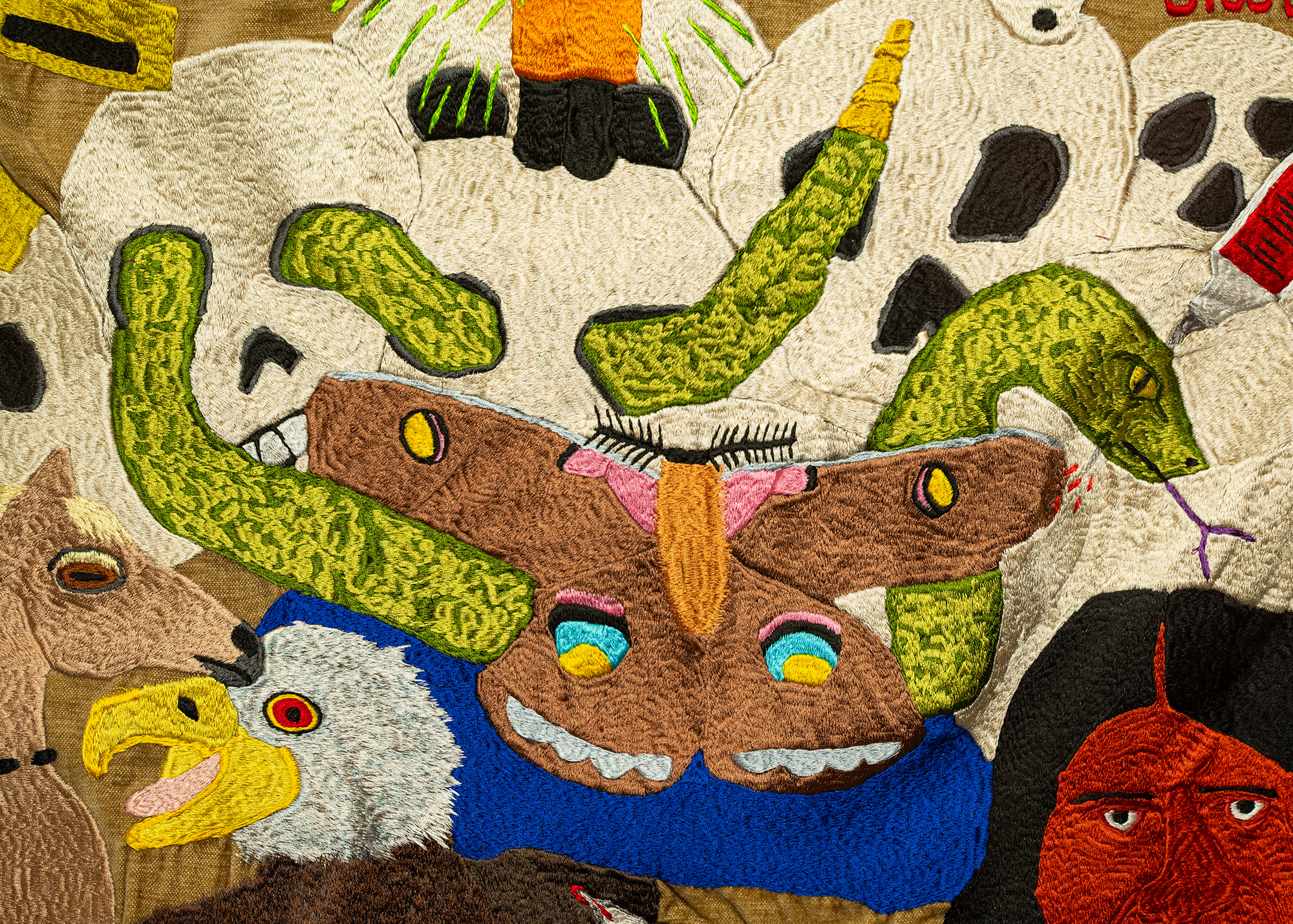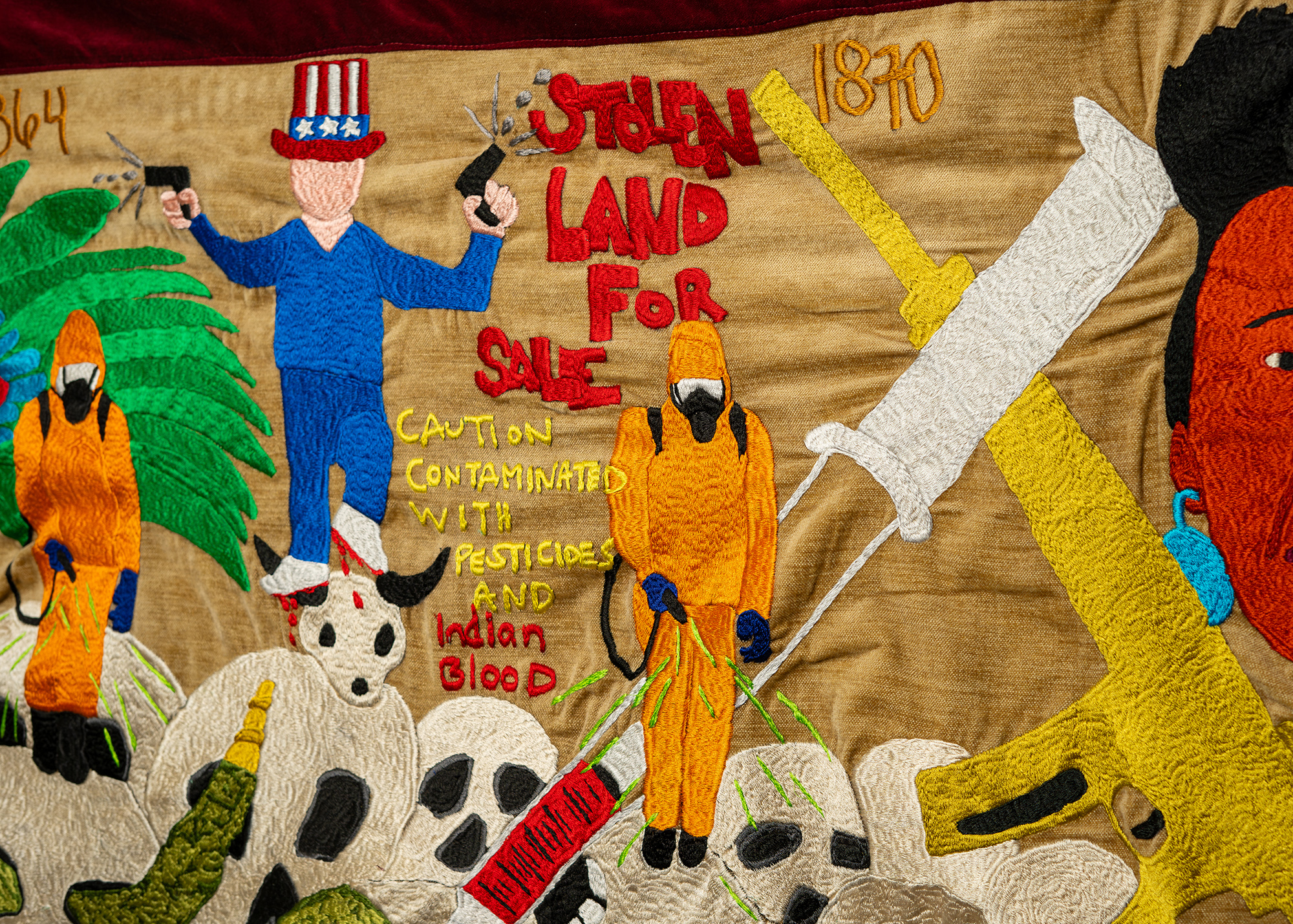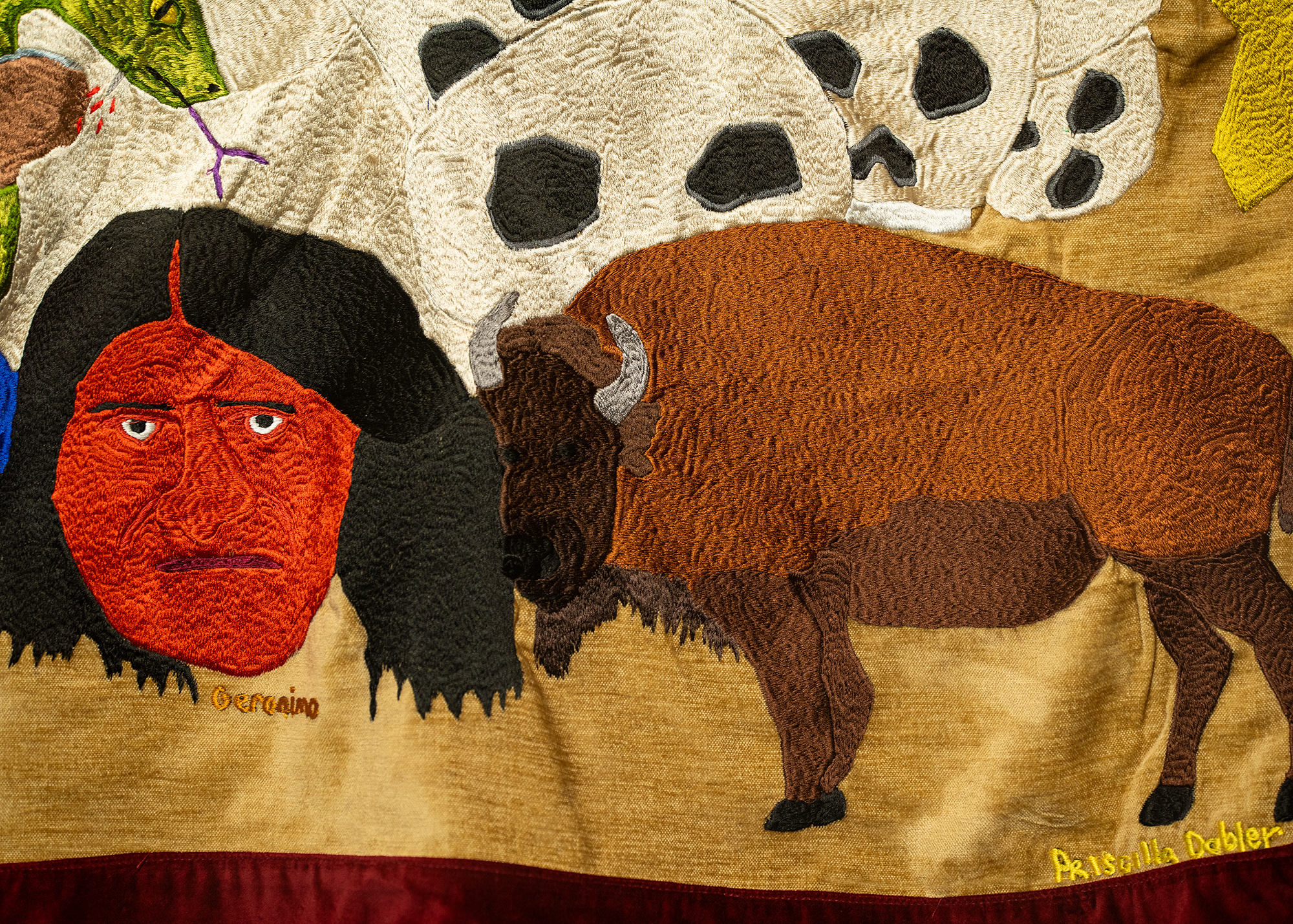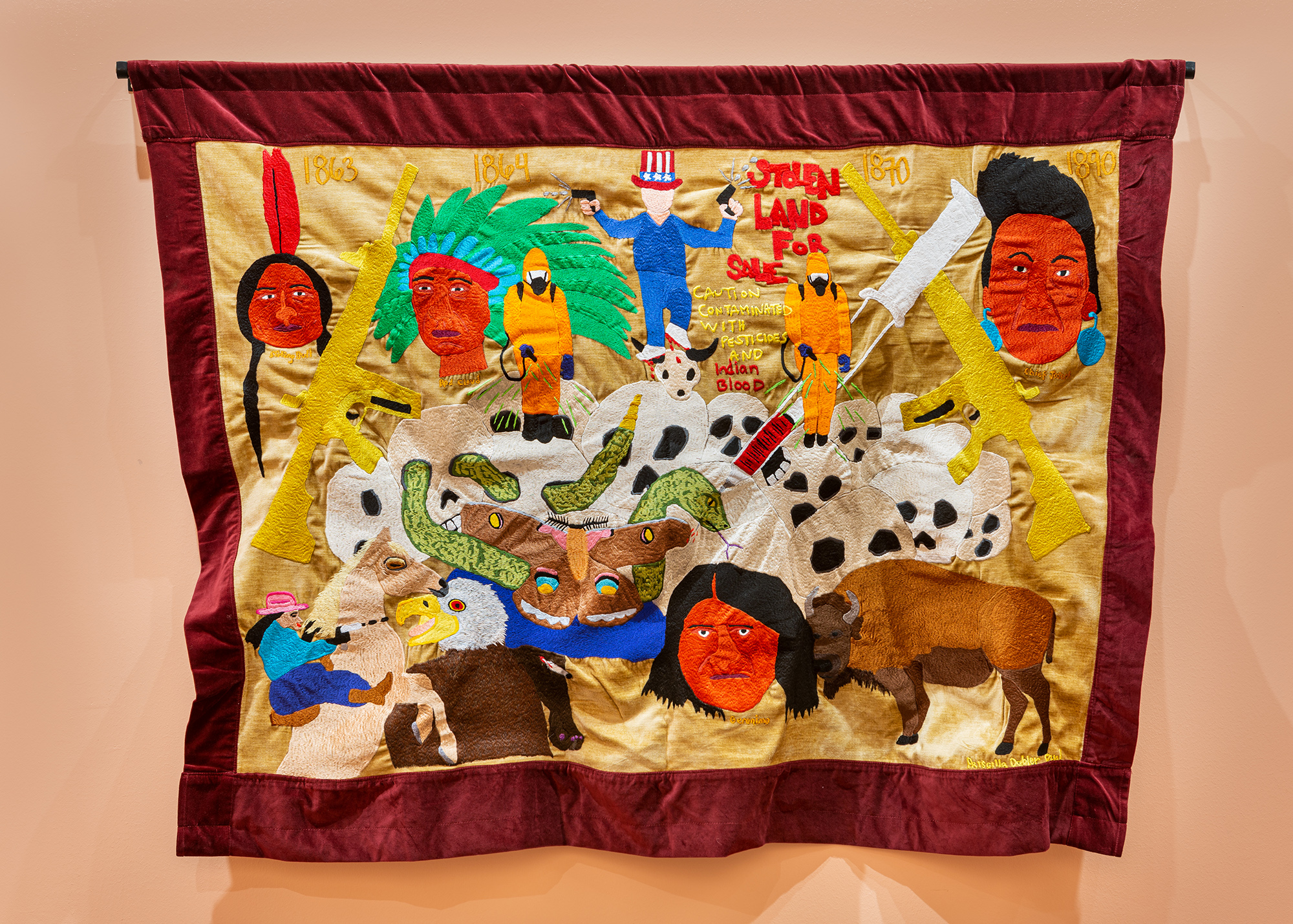Home of the Free explores the systemic abuses suffered by minorities and indigenous communities in the USA by juxtaposing iconography related to social injustice and ecology with symbols of hegemonic authority. The work pays respect to the indigenous people throughout the Americas who continue to resist and fight foreign government policies past, present and future. The dates labeled on the top of the textile are dates of the four deadliest massacres committed by the United States Army among the more than 1500 attacks against the Native Americans by the United States government: The Bear River Massacre (1863), Sand Creek Massacre (1864), Marias Massacre (1870), and the Wounded Knee Massacre (1890).
Home of the Free delves into the intertwined histories of cultural exchange and exploitation in the United States and Mexico.The tapestry includes embroidered portraits of Sitting Bull, Red Cloud, Chief Joseph, and Geronimo—all leaders who resisted and fought the United States government. Red Cloud’s headdress symbolizes trade routes, while a nationalist figure, reminiscent of Uncle Sam, stands on buffalo skulls with guns, representing ongoing genocide and environmental destruction. Farmers in hazard gear depict government-controlled agriculture, while a syringe filled with diseased blood symbolizes medical atrocities like the Tuskegee Experiment. The queer cowgirl challenges erasure from history, riding against the stereotype of the outlaw. The piece concludes with a hopeful note, celebrating the resilience of indigenous peoples and the buffalo’s resurgence despite near extinction.
